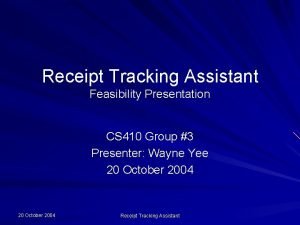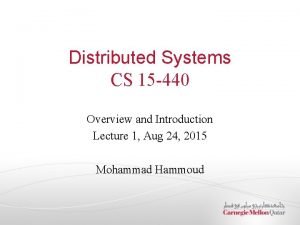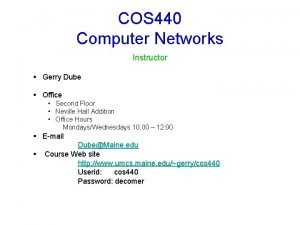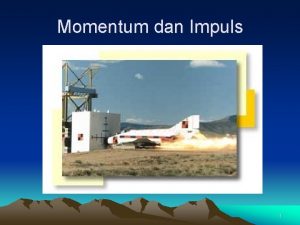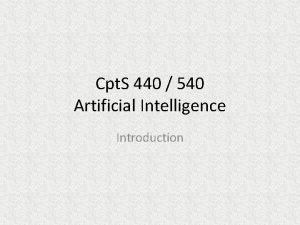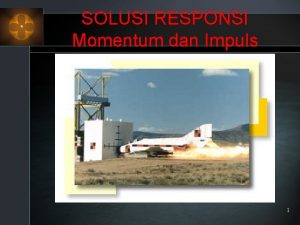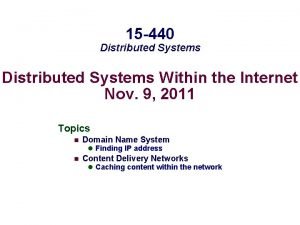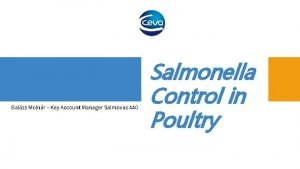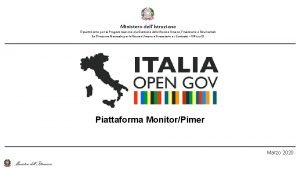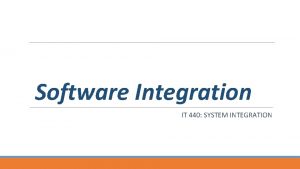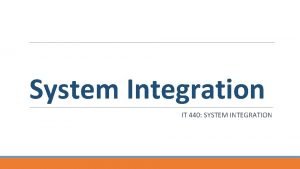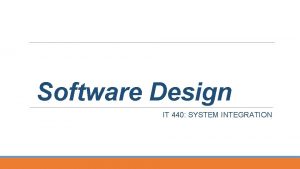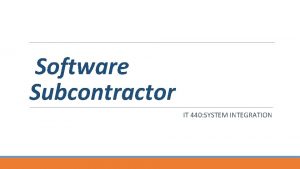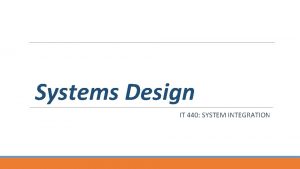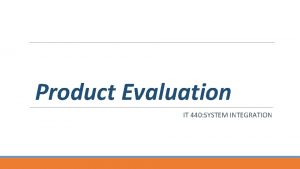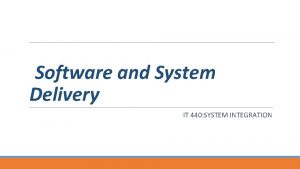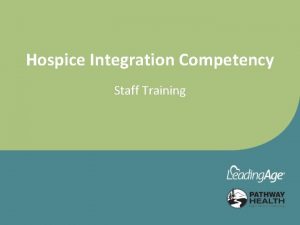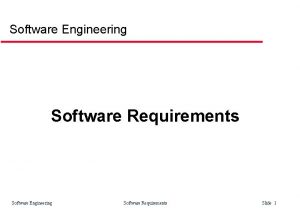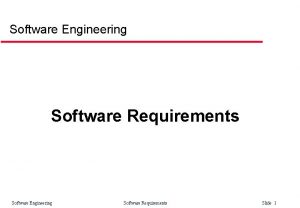Software Requirements IT 440 SYSTEM INTEGRATION Upon completion
















- Slides: 16

Software Requirements IT 440: SYSTEM INTEGRATION

Upon completion of this week’s activities you will be able to: ✓Define how software requirements provide programs and projects with a systematic approach to the development of software requirements pro vided by various ideas and solutions. ✓Discuss how software requirements establish the principals for software design and integration test activities for both soft ware and systems integration. ✓Differentiate the generation and execution of software requirements and how they are created as a stand alone item or as an item embedded in higher level assembly.

DEFINED SOFTWARE REQUIREMENTS Purpose: provide a systematic approach for program and project development of software requirements delivered by a number of ideas and solutions. • establish the principals for software design and integration test activities for software and systems integration. • created as a stand alone item or as an item embedded in higher level assemblies.

DEFINITION OF SOFTWARE REQUIREMENTS Stage One: review of the functional or performance requirements to identify the constraints on software. • Defined into greater detail to define derived software requirements. • System Requirement: used to determine accuracy, completeness, and applicability of the requirements for product. • Tool Purpose: (dynamic object oriented requirements system [DOORS], matrix worksheets, etc. ) used to understand potential architectures and associated software requirements. • Work Product: the execution and the knowledge of what flows from the start of requirements analysis to verification and validation drives software requirements development.

ANALYSIS • Include: a step by step process to develop requirements for software work products. • Use: fulfillment of high level user requirements, allocated system requirements, and ideas for system operational concepts. • Reports: produced as run procedures verified and validated to support test and evaluations.

USE CASE Purpose: to describe a flow of operations for the performance of systems and software implementation. • Defines the limitations/technical considerations established on target computers, work product execution strategy, and operating systems. Includes: functionality, performance, maintenance, and support considerations, in addition to the work product’s operational environment • Incorporates boundaries and constraint

FUNCTIONS Analysis Purpose: to guarantee an accurate and thorough understanding of software performance. • An ongoing activity during the software requirements definition process.

ARCHITECTURE Identified/ defined as part of derived software requirements. • Function: software design/development life cycle states and modes are established. • Application: timing, sequence, conditions, and execution probability define and redefine functional interface requirements for system architectures.

INTEGRATION Purpose: transforms functional architecture into optimal design solutions. Planning Resource Component: critical for implementation of disciplined interface management principles is critical in order to perform systems build integration activities for the execution.

VERIFICATION AND VALIDATION Verification and validation begins with the review of software requirements. Requirement Priority Purpose: determines the extent of verification and validation for each defined requirement. • Verification and validation is identified, a list of techniques that includes analysis is developed, inspections made, demonstrations run, and software integration tests conducted.

ACCOMPLISHED SYSTEMS VERIFICATION AND VALIDATION OF REQUIREMENTS Performance: plan, evaluate, and record software work product compliance with established requirements. Risk Reduction Assessment: ensures software design/development activities satisfy user needs in a manner that is efficient and cost effective for integration of validation and requirement verification.

REQUIREMENTS DOCUMENTATION Includes: software requirements and related information. • Use cases and derived software requirements are the source of each requirement. Definition: documented based upon development plans, software processes, and product standards.

REQUIREMENTS TRACEABILITY Documented according to developing planning, defined processes, and software work product instructions. Purpose: enters information into the traceability system according to the program/ project for traceability standards. • Traceable from system requirements or user requirements • Clearly lead to software architectural component.

FORMAL REVIEW PREPARATION Critical Requirement: defined and complete software requirements must be in place before formal review. • FCA Involvement: reviews requirements connected to the release of software documentation and procedures that trace to hardware drawings configured in work products. • Customer involved in both audits. • After customer satisfaction and audit approval the customer has the deliverable work product in possession.

MANAGING A REQUIREMENTS TOOL Software requirements tools should: ✓Have ability to impose multiple format requirements ✓Support traceability and impact analysis ✓Support software baselines and releases ✓Alert modifications of requirements database

RELEASED SOFTWARE REQUIREMENTS Purpose: designed to address the areas of software design/development that can affect requirements definitions. • aligns business goals and objectives • reduces rework • increases productivity • ensures that requirements lead directly to program and project success and effective software delivery
 Area code 440 location
Area code 440 location Komposittmaterialer
Komposittmaterialer 15-440
15-440 Cos440
Cos440 Textilexpo
Textilexpo Ukuran mudah sukarnya suatu benda untuk berputar disebut
Ukuran mudah sukarnya suatu benda untuk berputar disebut Basis risk arises due to
Basis risk arises due to Xavier mail delivery robot
Xavier mail delivery robot Bola dengan massa 0 440 kg yang bergerak ke timur
Bola dengan massa 0 440 kg yang bergerak ke timur 15-440 cmu
15-440 cmu 25-3/440
25-3/440 Salmovac 440
Salmovac 440 Ensc 440
Ensc 440 Section 17-4 patterns of evolution
Section 17-4 patterns of evolution Ensc 440
Ensc 440 Piattaforma pimer monitor
Piattaforma pimer monitor Fin 440
Fin 440
